The History Of Acura

Acura (Japanese: アキュラ, Akyura) is the luxury vehicle division of Japanese automaker Honda Motor Company. It primarily competes with Lexus, Infiniti and BMW among others in the luxury vehicle segment. The Acura brand has been used in the US, Canada, and Hong Kong since March 1986 to market Honda's performance vehicles and near-performance vehicles. The brand was introduced to Mexico in 2004 and to China in 2006. The Acura brand will be introduced in Russia at the end of 2008. Honda plans to introduce Acura to the Japanese domestic market (JDM) sometime around 2010. With the Acura brand, Honda is credited with being the first Japanese company to tap into the foreign luxury market. Before Acura, Japanese automobiles exports were primarily economical in design and largely targeted at low-cost consumers.
In 1986, following a decade of research, Honda opened 60 all-new dealerships in North America to support its Acura automobile division. Acura was the first Japanese luxury brand to be introduced, and its initial offering consisted of two models: the Legend, a V6-powered sedan, and the Integra, available as a five-door and three-door hatchback. The success of these models led to competing Japanese luxury brand ventures (Toyota's Lexus and Nissan's Infiniti).
Since 2006, actor James Spader has provided the voice-over for Acura commercials.
1990s
In 1990, four years after the debut of the Legend and Integra, Acura introduced the NSX, a midship V6 powered, rear-wheel-drive sports car. The NSX, an acronym for "New Sports eXperimental", was billed as the first Japanese car capable of competing with Ferrari and Porsche. This vehicle served as a halo car for the Acura brand. The NSX was the world's first all-aluminum production car, and was also marketed and viewed by some as the "Everyday Supercar" thanks in part to its ease of use, quality and reliability, traits that were unheard of in the supercar segment at the time.
Despite a strong start for the Acura brand (in terms of market acceptance), sales suffered in the mid-to-late 1990s. Some critics attributed this decline in part to less inspiring designs, which were alleged to be re-branded Japanese-spec Hondas. Additionally, during this time Acura switched to an alphanumeric nomenclature formula, dropping the Legend and Integra titles. The 1996 3.5 RL, which replaced the popular Legend, was seen by many as the epitome of this problem, namely because the RL designation was more anonymous than the former Legend title, which had sort of grown into its own cult following and still does so to this day. Also, the RL's 210horsepower (160kW) V6 (later increased to 225 hp), together with a high price and styling that cautiously copied the larger rear wheel drive and V-8 powered Lexus LS 400, did little against BMW, Audi, Lexus, and other competitors. During this time, the NSX also lost sales as Acura made few changes from its original 1989 trim. A year later, the Integra sedan was withdrawn, replaced by the Acura 1.6EL, which was only sold in Canada as a rebadged Honda Civic. The Integra sedan continued to be sold in the United States until 2001.
Despite these letdowns, Acura gained prominence in the 1990s with a young group of customers: "tuner" enthusiasts. Parent company Honda's reputation with this demographic as a maker of "easy-to-tune" and "rev-happy" engines rubbed off onto Acura, and the Integra became a popular tuner car.
2000s
Beginning around the year 2000, Acura experienced a rebirth which was catalyzed by the introduction of several redesigned models. The first of these models was the 1999 Acura 3.2 TL, an upscale sedan competing with the likes of the Lexus ES, Infiniti I30, and BMW 3-series. Critics suggested that although 3.2 TL did not outdo its competition in any one area of luxury cars, it offered a well-rounded blend of sportiness and luxury. These characteristics, combined with the TL's competitive price, proved very popular with consumers. Subsequent Acura models have followed a similar philosophy of offering lots of standard equipment and very few options.
Another refreshed Acura introduced in the early 2000s was the MDX, a popular three-row crossover SUV based on the Honda Odyssey minivan. The MDX replaced the slow-selling SLX, which was little more than a rebadged Isuzu Trooper. The MDX was a car-like crossover SUV with little off-road capability that catered to the demands of the luxury SUV market. It was given top honors by Car and Driver in its first comparison test against seven other SUVs. Other cars in Acura's line-up during this time included the 3.2 TL, 3.2 CL, RSX (formerly the Integra hatchback), and the NSX. By the late 2000s, Acura had dropped the inclusion of engine displacement numbers in its vehicle designations, retaining a simpler, two- or three-letter designation instead (e.g. 3.5 RL became RL).
A new TL debuted for the 2004 model year, featuring sharp, Italianate styling and a 270hp (200kW) V6 measured by the then-current SAE standards. The new TL increased sales dramatically to 70,943 American units in 2005, trumping competitors such as the C-Class, G35, CTS, ES 300, and A4.
Also around the same time the TSX was introduced as a cheaper alternative to the BMW 3-Series. It was essentially a re-badged European-market Honda Accord loaded with features. This model became the only 4-cylinder sedan in Acura's line-up.
In 2005 a new RL was introduced with a 300hp (220kW) V6, improved styling, and Super Handling All-Wheel Drive (SH-AWD), a system capable of sending almost all of the RL's power to just one wheel in a turn.
Acura's new models—particularly the TL and TSX—were well received by the motoring press and became Acura's top selling vehicles. The TSX was on Car and Driver's Ten Best list from 2004 – 2006.
In 2006 Acura introduced a small SUV called the RDX with models becoming available to U.S. consumers in August 2006. It is powered by a turbocharged 240-hp 4-cylinder engine and, like the RL, uses Acura's SH-AWD system. The model is available in two versions: Premium (the standard offering), and Technology Package (an upgraded offering with a GPS navigation system, Bluetooth phone integration, and other high tech features).
A completely redesigned MDX became available in the fall of 2006 with a 300hp (220kW) V6 engine and Super Handling All-Wheel Drive. The next year, Acura re-introduced the TL Type-S for the 2007 model year.
2009 marked the all new TL and TSX models as well as an extensively redesigned RL; all three made their debuts in the 2008 calendar year.
Almost since its inception, Acura has been involved in American motorsports, specifically in Sports Car Club of America (SCCA) and IMSA GT Championship series. Starting in 1991, Acura reached an agreement with the Comptech Racing to use the V6 motor of the all-new Acura NSX in Comptech's Camel Lights Spice prototype. Acura would go on to take the Lights championship in its initial year, including a class win at the 24 Hours of Daytona. Acura and Comptech would take the Lights championships again in 1992 and 1993, as well as another Daytona class win in 1992 and a class win at the 12 Hours of Sebring for 1993.
However a change in the IMSA rules would lead to the demise of the Camel Lights, and so Acura moved to touring car racing, joining Realtime Racing in the SCCA World Challenge with the NSX in 1996, winning the final two races of the season. In 1997, Acura added Acura Integras to the lower classes, and were successful in taking the championship in both of these classes. Realtime took the touring championship with the Integra again in 1998, and came within a few points of winning it again in 1999 only to lose it in the final race, then coming back to retake the title in 2000.
Although Realtime had abandoned the NSX program in 1998, the NSXs returned to the top class in 2001. Although the NSX squad suffered mechanical woes and were unable to take the title, the Integras of the touring class once again took the teams championship. By 2002, Acura replaced the aged Integra with the new Acura RSX in the final races of the season, scoring good finishes in their debut. At the same time, Acura finally retired the NSXs from the top GT class. The RSXs would later be joined by new Acura TSXs in 2004. Realtime continues to campaign the RSX and TSX in the SCCA Speed World Challenge. Acura also currently races RSXs and TSXs in the Grand American Road Racing Association's KONI Challenge Series for touring cars.
At the Detroit Auto Show in 2006, Acura announced their plans to enter the American Le Mans Series with multiple teams of Le Mans prototypes in the LMP2 class starting in 2007 season. The cars would be purchased chassis from existing manufacturers, but use American-built Acura V8s (a first for Acura and Honda). Acura also announced their initiative to take the cars to the 24 Hours of Le Mans in 2008 and eventually move to the superior LMP1 class with cars built by Acura themselves in 2009. Later in 2006, Acura announced that the three factory teams would be Andretti Green Racing, Fernández Racing, and Highcroft Racing, and that the chassis would be built by Lola Cars of the UK and Courage Compétition of France.
The three Acura-powered prototypes debuted at the 2007 12 Hours of Sebring, opening round of the ALMS season, and were successful in their debut. Andretti Green's Acura took second place overall and first in the LMP2 class, while Fernández Racing took third overall, and Highcroft sixth, beating a series of established Porsche teams in their class. At the same time, Acura began development of their own chassis by heavily modifying their purchased Courage chassis. The cars now have been so radically changed from their original orientation that they are now named Acura ARX-01a. Acura will introduce evolved B-spec cars in the 2008 season, with Gil de Ferran launching a fourth Acura team in the ALMS.
1986 Acura debuts in North America as the first Japanese luxury marque. 1990 Acura dealerships in the US win their fifth consecutive first-place ranking on the Customer Satisfaction Index by J. D. Power and Associates. Acura announces that it will expand research and development in US. 1991 The Acura Legend coupe wins Motor Trend's prestigious Import Car of the Year trophy. Honda's revolutionary VTEC technology is introduced in the NSX Acura is introduced in Hong Kong by Reliance Motors 1996 The CL coupe is introduced as a '97 model 1997 The Integra Type-R is introduced. The Civic-based 1.6EL replaces the Integra sedan in the Canadian lineup, while the Integra sedan continued U.S. sales until 2001. 2001 The MDX wins the prestigious Motor Trend "2001 Sport/ Utility of the Year" award. Civic-based 1.7EL launched, replacing the 1.6EL, in the Canadian lineup. 2002 Acura RSX replaces Integra name in North America. Integra, first introduced in 1986 2003 CL is dropped. 2004 Acura is introduced in Mexico by Honda de Mexico. 3rd generation Acura TL is introduced. TSX is introduced. TSX becomes very competitive choice against popular BMW 3-series. 2005 The new Acura TL wins "Consumer's Most Wanted Vehicle" at Edmunds.com Acura RL is introduced with revolutionary SH-AWD system Acura drops engine size from 1.7EL model name. 2006 Acura is introduced in China. Acura RDX is introduced with SH-AWD Acura introduces CSX to replace EL, and is only sold in Canada. Acura RSX is dropped. 2007 Acura MDX receives a redesign. Acura TL Type-S is reintroduced, CSX Type-S is introduced. 2008 Acura announces the introduction of the diesel engine into the lineup. Acura introduces the new RL, which receives a mid model change redesign at the Chicago Auto Show. Acura introduces new TSX at the New York Auto Show. 2009 [year model] Acura TSX receives a redesign. Acura TL receives a redesign. Acura RL receives a mid-model change. Acura CSX receives a mid-model change.- MDX (luxury SUV)
- RDX (crossover SUV)
- RL (mid-size sedan) (known as "RL" in North America, "Legend" in the rest of the world)
- TL (mid-size sports sedan)
- TSX (compact sports sedan)
- CSX (compact sedan) (replacement for the Acura EL, only available in Canada)
- Acura will be introduced in Japan two years from 2008 or later (estimated)
- Acura “Advanced Sedan Concept“ (flagship)
- Acura “Advanced Sports Car Concept“ (next generation NSX)
- Acura is currently working on an SUV above the MDX.
- EL (compact sedan, replaced Integra sedan; available only in Canada, replaced by the CSX--which is also available only in Canada)
- Integra (sports coupe and sedan, replaced by the RSX and EL)
- RSX (sports coupe, discontinued after the 2006 model year)
- Legend (luxury sedan and coupe, replaced by the RL) ("Legend" nameplate discontinued only in N. America)
- Vigor (mid-sized sedan, replaced by the TL)
- CL (luxury coupe, discontinued after 2003 model year)
- SLX (SUV, replaced by the MDX; available only in the United States)
- NSX (exotic coupe) In production until 2005.
- Sterling – a version of the Rover 800 (shares Acura Legend platform) marketed in the USA, built in the UK by the Rover Group
From Wikipedia, the free encyclopedia
More About Acura
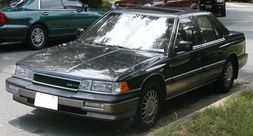
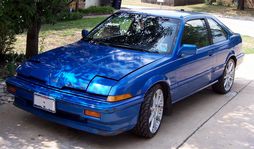
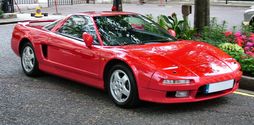
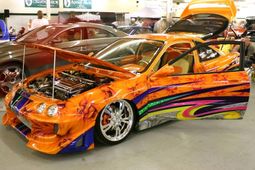


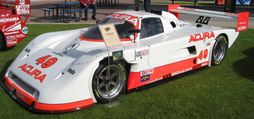
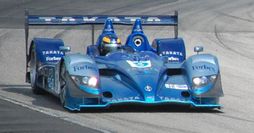
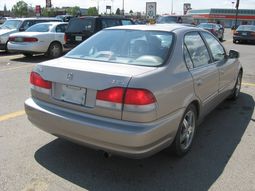
|